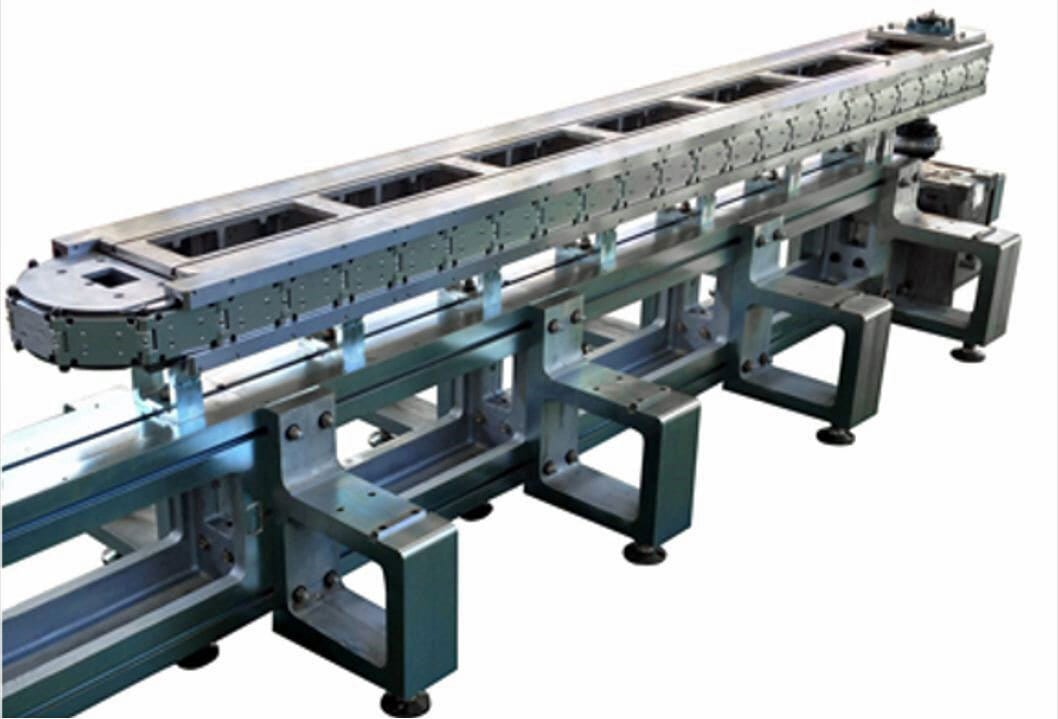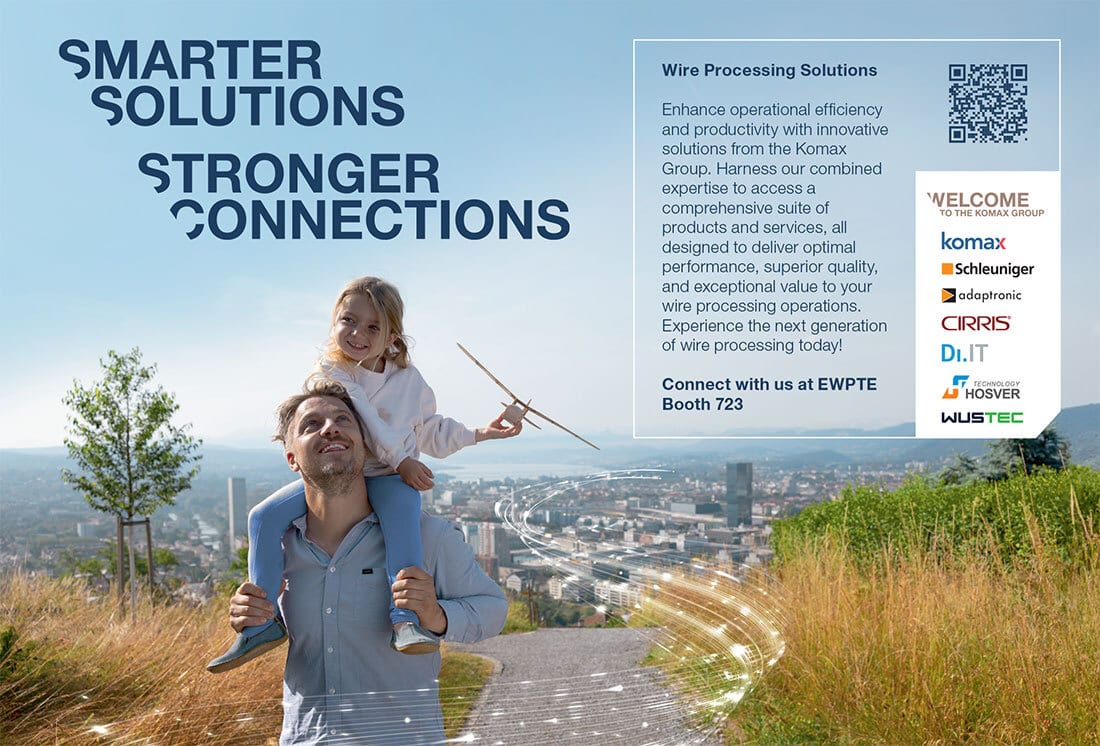SEE
IT
AT

Linear Indexing System Is Rigid, Precise
Choosing between linear and rotary indexers for an automated assembly application depends primarily on the size of the product and the space available on the plant floor.
Most products assembled on rotary indexers are small, with each assembly process taking seconds, not minutes. Rotary indexers typically range in size from 18 inches to 15 feet in diameter. In general, these systems are best for simple assemblies—eight parts or less—that can be completed with 12 to 16 stations.
Linear indexing systems, by comparison, are better suited for complicated assemblies. This is why they are popular among medical device manufacturers, which sometimes operate systems containing dozens of stations. If the plant floor is narrow, linear systems are a better fit. These systems optimize space by placing stations on both sides of the conveyor and allowing tooling in the center area. They are modular and easily expandable, like inserting leaves in a table, and they can shuttle assemblies from station to station in fractions of a second.
The most common type of linear indexing system is a precision-link conveyor powered by a cam- or servo-driven indexer. This type of conveyor consists of machined plates, or pallets, that are linked together in a chain like tank treads. The chain rides in tracks between two large sprockets. Roller bearings enable the plates to move smoothly along the tracks and to pivot as they move around the sprockets. Part fixtures are mounted directly to the plates, which are made of aluminum, steel or cast iron.

The Agile Slim precision link conveyor chassis provides greater rigidity and flexibility than conventional rotary and linear indexing systems. Photo courtesy Swanson-Erie
A good example is the Agile Slim precision link conveyor chassis from Swanson-Erie. The conveyor can be oriented in any attitude, and it can be equipped for indexing and continuous motion transfer. The conveyor provides greater rigidity and flexibility than conventional rotary and linear indexing systems. Everything is bolted and precisely keyed. This effectively eliminates drilling and tapping holes and saves significant design and assembly cost. Standard tool mounting features are provided on all sides of the machine along its full length.
The conveyor can be built in increments of 18 and 36 inches. The links are customizable and are available in lengths as small as 1.5 inches. A variety of standardized bases and components are available to customize the machine.
For more information on indexing systems, click www.agileassembly.com or visit the company’s booth at The ASSEMBLY Show. Swanson-Erie is one of numerous suppliers of assembly machines that will be exhibiting at the show, which will take place Oct. 21-23 at the Donald E. Stephens Convention Center in Rosemont, IL. Besides suppliers of automation systems, you’ll find 225 suppliers of presses, robots, motion control technology, parts feeders, fastening tools, software and other assembly technologies. For more information, visit www.theassemblyshow.com.






